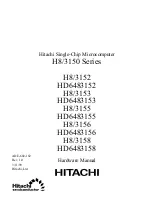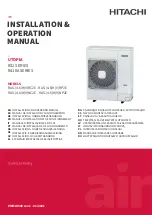
Introduction
ARM DDI 0301H
Copyright © 2004-2009 ARM Limited. All rights reserved.
1-21
ID012310
Non-Confidential, Unrestricted Access
1.5.10
System control
The control of the memory system and its associated functionality, and other system-wide
control attributes are managed through a dedicated system control coprocessor, CP15. See
System control and configuration
on page 3-5 for more details.
1.5.11
Interrupt handling
Interrupt handling in the ARM1176JZF-S processor is compatible with previous ARM
architectures, but has several additional features to improve interrupt performance for real-time
applications.
The following sections describe interrupt handling in more detail:
•
Vectored Interrupt Controller port
•
Low interrupt latency configuration
•
Configuration
on page 1-22
•
Exception processing enhancements
on page 1-22.
Note
The
nIRQ
and
nFIQ
signals are level-sensitive and must be held LOW until a suitable interrupt
response is received from the processor.
Vectored Interrupt Controller port
The core has a dedicated port that enables an external interrupt controller, such as the ARM
Vectored Interrupt Controller
(VIC), to supply a vector address along with an
interrupt request
(IRQ) signal. This provides faster interrupt entry but you can disable it for compatibility with
earlier interrupt controllers.
Low interrupt latency configuration
This mode minimizes the worst-case interrupt latency of the processor, with a small reduction
in peak performance, or instructions-per-cycle. You can tune the behavior of the core to suit the
requirements of the application.
The low interrupt latency configuration disables HUM operation of the cache. In low interrupt
latency configuration, on receipt of an interrupt, the ARM1176JZF-S processor:
•
abandons any pending restartable memory operations
•
restarts memory operations on return from the interrupt.
To obtain maximum benefit from the low interrupt latency configuration, software must only use
multi-word load or store instructions that are fully restartable. The software must not use
multi-word load or store instructions on memory locations that produce side-effects for the type
of access concerned. This applies to:
ARM
LDC, all forms of LDM, LDRD, and STC, and all forms of STM and STRD.
Thumb
LDMIA, STMIA, PUSH, and POP.
To achieve optimum interrupt latency, memory locations accessed with these instructions must
not have large numbers of wait-states associated with them. To minimize the interrupt latency,
the following is recommended:
•
multiple accesses to areas of memory marked as Device or Strongly Ordered must not be
performed
















































